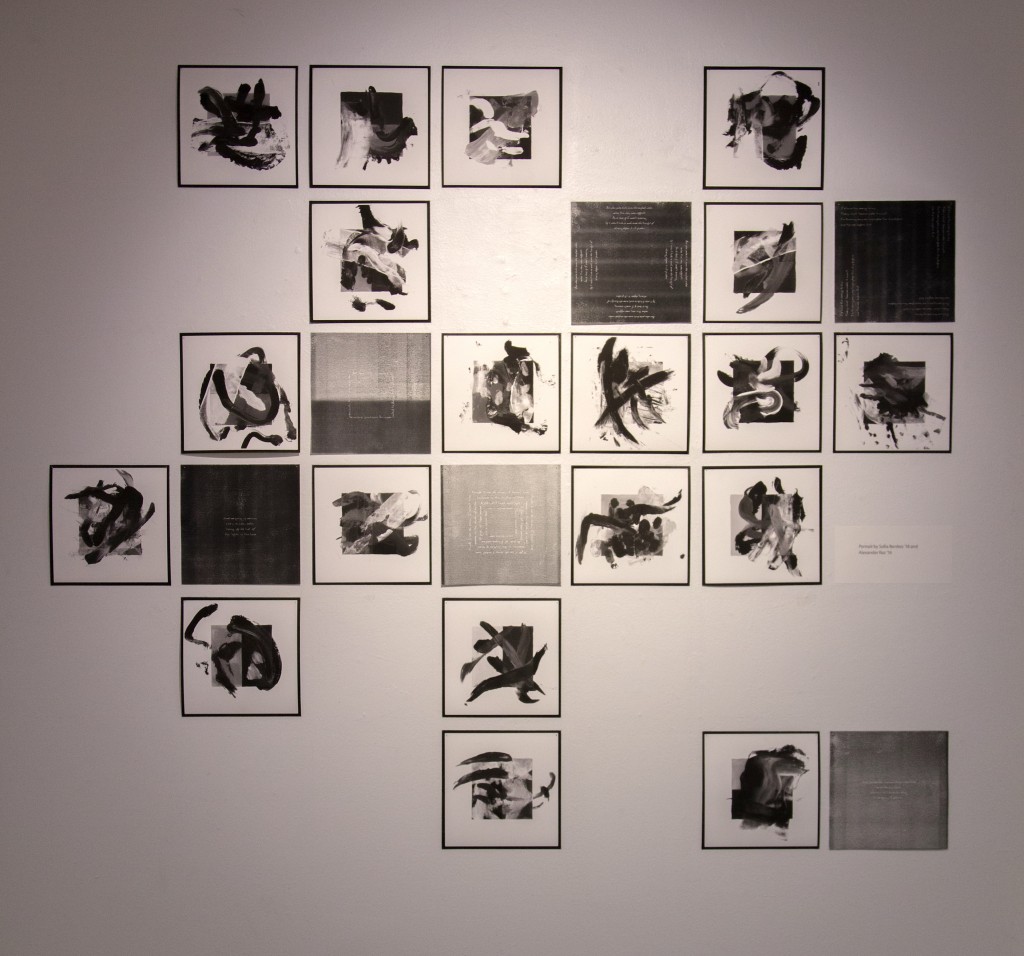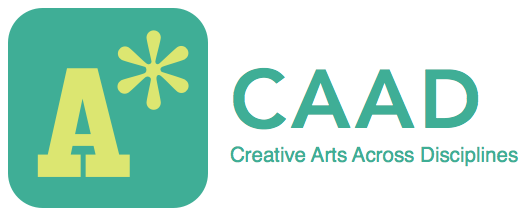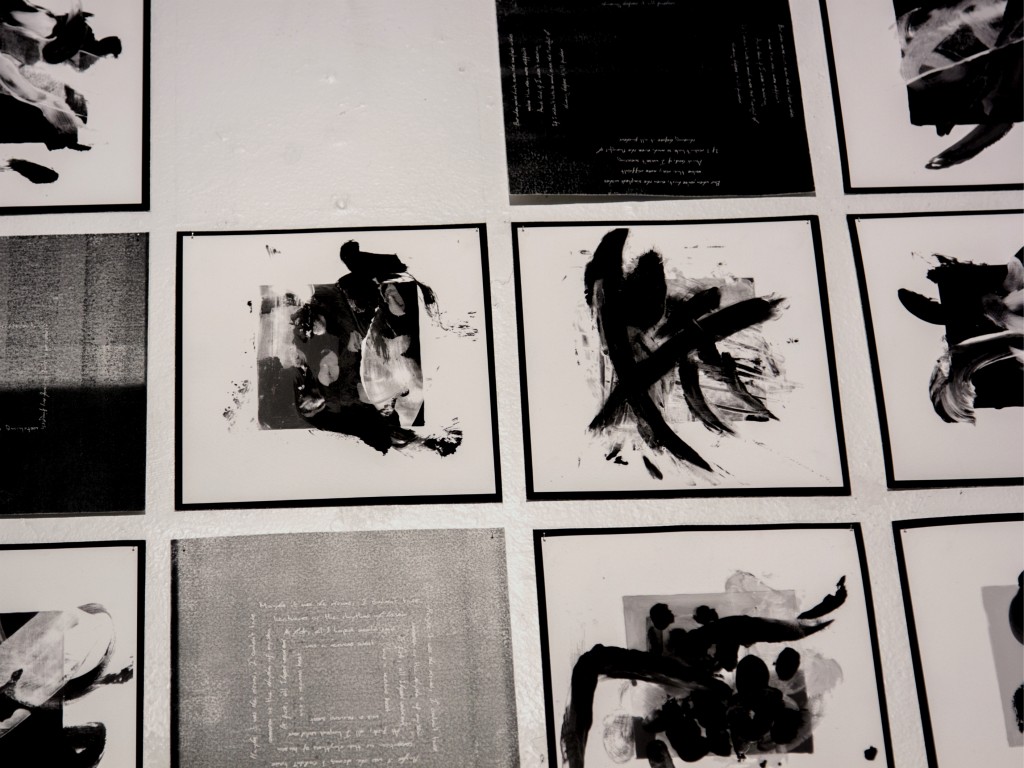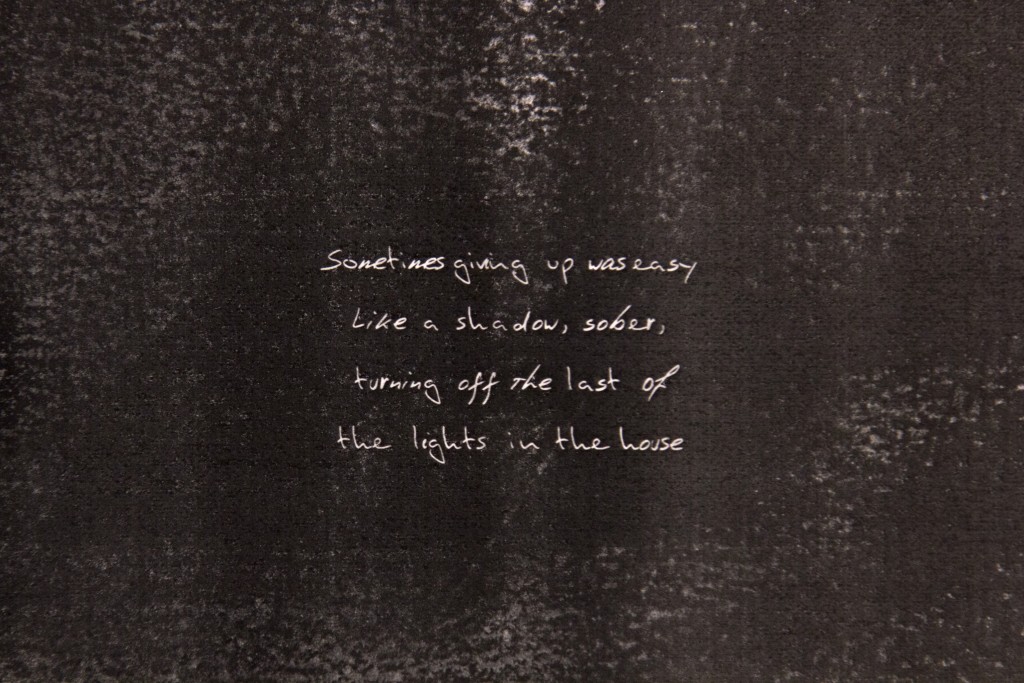“Portraits” by Sofia Benitez and Alex Raz On our work in Boundary-Crossing
S: ‘Is this one dancing?’, offered my roommate as I went through the pages. The series of self portraits I’d worked on hadn’t taken on any form for me at first. In fact I was ready to leave them in Mexico before my mother, a graphic designer, told me to explore them further. Twenty square frames, which I originally used for a color theory exercise, served as a canvas for multiple gestural paintings. I hadn’t painted in some time, and my usual process is intuitive but not organic in its entirety. I like to depart from a concept, think about composition, or at least meditate before delving into a canvas. But there was something compelling about the primness of the neat white squares, enclosing yet other squares of two colors sharing space, that made me want to deface them. But instead of erasure, this process lead to an amplification of form and color, a surfacing of texture that was not so out of context.
I mixed and smeared, not ignoring the principles that I usually adhere to, but instead following them as I worked. I was interested in exploring mind and movement in a less constricted way, almost as if each stroke was a reaction to another, or to a color, like a conversation. In the end there were multiple traces of erratic impressions, layered with sections of almost self indulgent motions that became increasingly tactile.
When devising ways to carry out our collaboration for Boundary Crossing, I worked on the prints to bring out the calligraphic aspect of them. Rendering them in black and white affected the contrast and depth in a sense that kept me interacting with the material. They were versatile in strange ways and I had fun fighting my urge to think of a final ‘product’ and rather pulling it in different directions to see what that yielded. Alex and I established we wanted to compose a mural that spoke to both of our affinities with the arts. We’d had extensive talks about poetry in the past and collaborated in interpretations of exhibitions on campus. Though articulating what the wall at the Palmer would look like was difficult, we had a mutual understanding of what we wanted to utilize to convey our intention.
A: Before our conversations, I began work on a poem; it’s first stanza read:
Sometimes giving up was easy
Like a shadow, sober,
turning off the last of the lights in the house.
Shortly after writing the above, Sofi and I were looking through her portfolio via Skype. I was moved by her series of gestural paintings, images as tactile as they were in so many ways intangible. She converted her paintings to gray-scale, and with them as a reference I finished my poem. I strove for a simpler lyric, a verbal portrait able to complement the abstract gestures of Sofi’s pieces. Narratively the poem became itself a portrait, a speaker in a head-space between loss and isolation, and depressed from exterior realities…
But here it’s different, graceland slipping through my fingers,
watching everyone dreaming
beneath the lights next door
At its conclusion, the speaker moves on, but carries with them the weight of each former stanza. In designing the poems visually then (their internal layout, and their place amongst Sofi’s prints), I wanted the visual to echo the story. A viewer will notice the six original stanzas burst towards the edges of the squares, deviating as they radiate with the speaker’s thoughts, and the squares containing the stanzas rise and fall with the overarching plot.
After various trials, I believe the poems became a perfect counterpart to Sofi’s works. I heightened their organic, sometimes cinematic quality by removing the ink, as seen above. And these textures, gentle, complement the stark contrast present in the surrounding prints. So it’s through some great deal of time, conversation, and coincidence that I felt we had truly merged our aesthetic curiosities and passions.
Utilizing the space at the Palmer as a platform for our interests was a powerful learning experience. From the hours spent planning our composition, to the time dedicated towards crafting it and even the effort that went into setting it up, it feels like the ‘creative process’ wasn’t an isolated event, but an ongoing meditation. Crossing boundaries took on a different form, not one of transgression but of construction. Presenting image as text and text as image, fragmenting the canvas we would originally use, and working with and not against the challenges were our ways of realizing the potential of collaboration.



